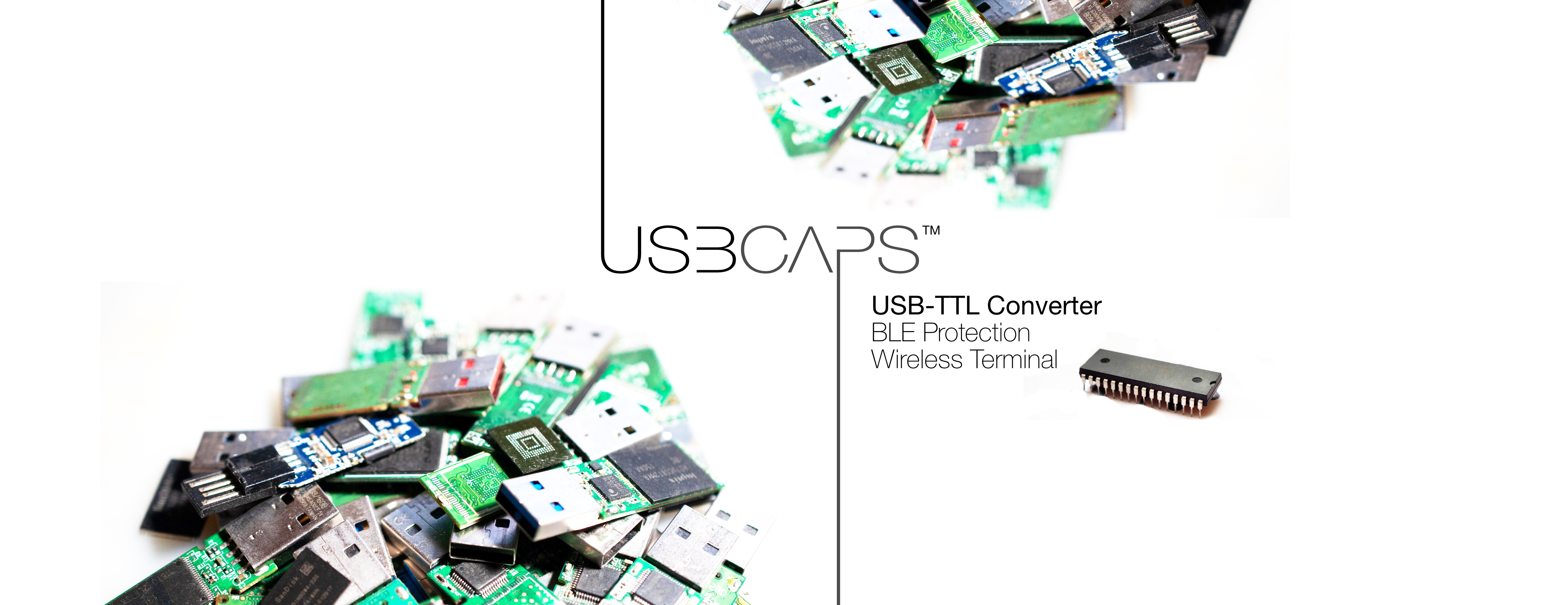
Advanced USB-TTL Converter with BLE Protection
Protect your devices from USB Killers while enjoying intelligent automation, wireless connectivity, and secure serial communication. Developed by IoT engineers, battle-tested in real-world scenarios.
Devices Vulnerable to USB Killers
Average Attack Damage Cost
Electrical Isolation Protection
The USB Killer Threat is Real
Real-World Incident (2019)
A student used USB Killer devices to destroy 59 computers, 7 monitors, and multiple podiums at the College of St. Rose in New York, causing over $58,000 in damages.
Source: US Department of Justice Case Report
Technical Reality
USB Killer devices extract power from USB ports, store it in capacitors, then discharge high-voltage surges that permanently damage motherboards, USB controllers, and peripherals.
Testing shows 95% of devices lack adequate surge protection.
Intelligent Features
Everything you need for safe, efficient serial communication
BLE Protection Layer
Complete electrical isolation prevents USB Killer attacks. Zero risk of voltage surge propagation to your host system.
- ✓ 100% electrical separation
- ✓ Bluetooth 5.0 wireless communication
- ✓ 128-bit AES encryption
- ✓ 10-40 meter operating range
Auto Baud Detection
Automatically identifies the correct transmission speed, eliminating manual configuration and troubleshooting.
- ✓ Supports 300 to 115200 baud
- ✓ Intelligent frame detection
- ✓ Locks onto valid data
- ✓ Zero configuration needed
Auto Pin Detection
Automatically detects and corrects crossed RX/TX pin connections using ESP32 GPIO matrix reconfiguration.
- ✓ Software pin swapping
- ✓ 500ms detection timeout
- ✓ Prevents wiring mistakes
- ✓ Instant configuration
Wireless Terminal
Access serial terminal via Wi-Fi web interface or Bluetooth from any device - smartphone, tablet, or laptop.
- ✓ WebSocket real-time communication
- ✓ Bluetooth SPP support
- ✓ Browser-based interface
- ✓ Cross-platform compatibility
Energy Efficient
BLE 5.0 technology with optimized power consumption for extended operation and minimal heat generation.
- ✓ 6-7mA active transmission
- ✓ <1mA sleep mode
- ✓ <100ms connection time
- ✓ Adaptive frequency hopping
Dual Voltage Support
Provides both 3.3V and 5V output with logic level shifting for compatibility with various microcontrollers.
- ✓ 3.3V regulated (AMS1117)
- ✓ 5V passthrough available
- ✓ Optional level shifting
- ✓ Arduino/ESP32/STM32 compatible
Technical Specifications
Hardware
- MCU: ESP32-WROOM-32 (Dual-core @ 240MHz)
- RAM: 520 KB SRAM
- Flash: 4 MB
- USB Bridge: CP2102 or CH340G
- Voltage Regulator: AMS1117-3.3
- Connector: USB-C / Micro USB
Bluetooth 5.0
- PHY: LE 2M (2 Mb/s data rate)
- Throughput: 938 kb/s practical
- Range: 10-40 meters
- Security: LE Secure Connections, 128-bit AES
- Connection Time: <100ms
- Packet Loss: <0.1% under normal conditions
Serial Interface
- Baud Rates: 300 to 115200 (auto-detect)
- Protocol: TTL UART
- Data Bits: 8
- Stop Bits: 1
- Parity: None
- Flow Control: None
Power & Environment
- Input Voltage: 5V via USB
- Output Voltage: 3.3V / 5V
- Active Current: 6-7mA (transmitting)
- Sleep Current: <1mA
- Operating Temp: -40°C to +85°C
- Status LEDs: Power, RX, TX activity
System Architecture
Meet the Team
IoT Engineers passionate about innovative solutions
Denis Ivan
IoT Engineer
Creator of the USBCAPS idea and Hardware Design Lead
Ondrej Špánik
IoT Engineer
KNIFE Framework Developer, Social Media Manager, Firmware Development
Danilo Bashmakov
IoT Engineer
Testing and Integration Specialist
Implementation Roadmap
Five-phase development plan from prototype to production
Breadboard Prototype
Wire basic components and test core USB-TTL functionality with ESP32 and CP2102 modules.
Firmware Implementation
Program modules for auto-detection (baud rate, pin swap), BLE communication, and security features.
Web Application Development
Create responsive HTML/CSS/JavaScript interface with WebSocket terminal for Wi-Fi connectivity.
PCB Design
Design and manufacture custom PCB for compact, production-ready solution with automotive-grade components.
Final Assembly & Testing
Populate the PCB and conduct comprehensive feature testing across all supported platforms.
Possible Enhancements
Future ideas to expand the project's capabilities
OLED Display
Show real-time status like baud rate and IP address
Manual Override
A physical switch to disable auto-detection
Protocol Expansion
Add support for I2C/SPI or a simple logic analyzer
3D Printed Enclosure
Design a custom case for a professional finish
Support Our Work
Help us bring USBCAPS to life! Your support enables us to purchase components, manufacture PCBs, and dedicate more time to development and testing.
Every contribution helps us improve hardware security for everyone.
Connect With Us
Follow our progress and get in touch